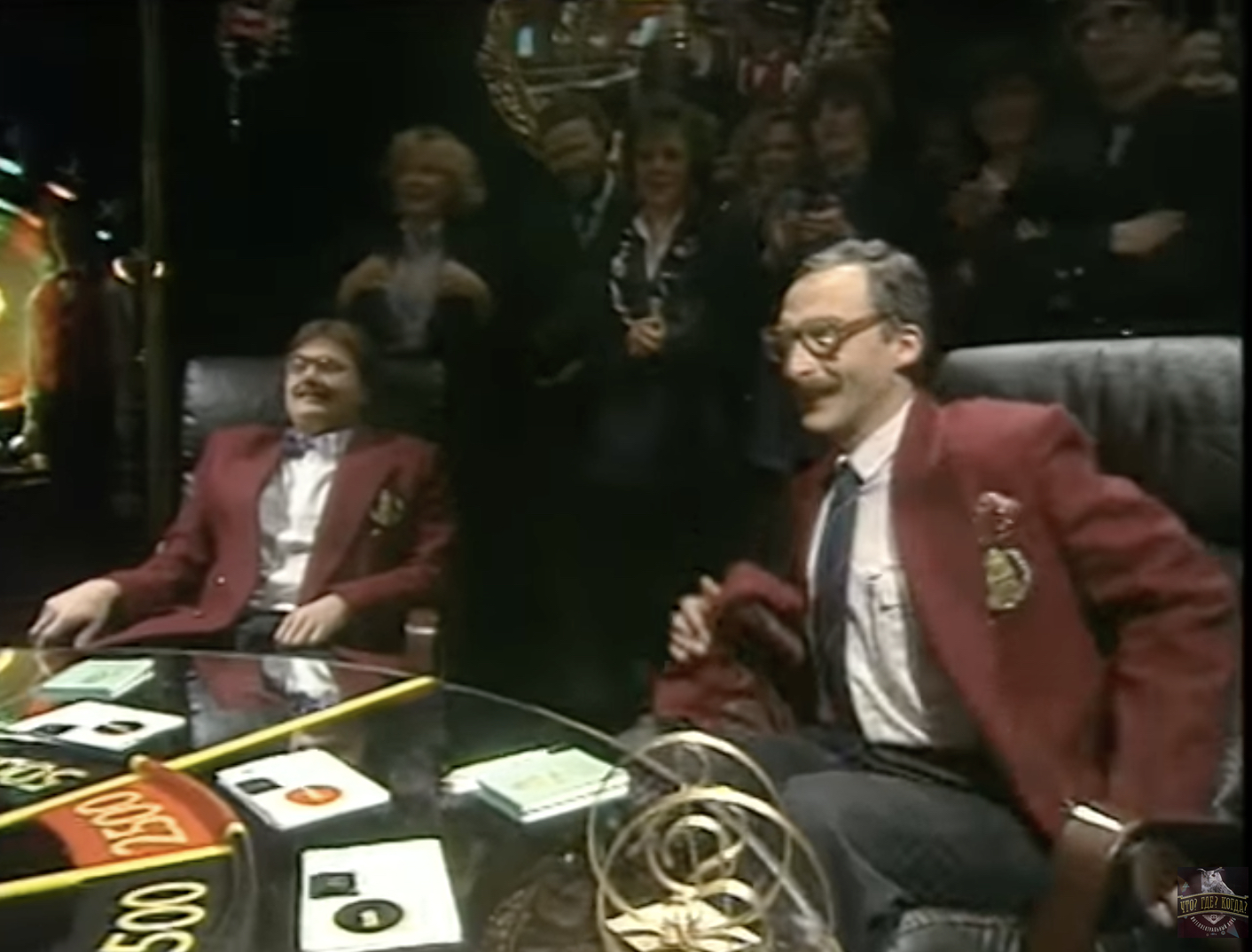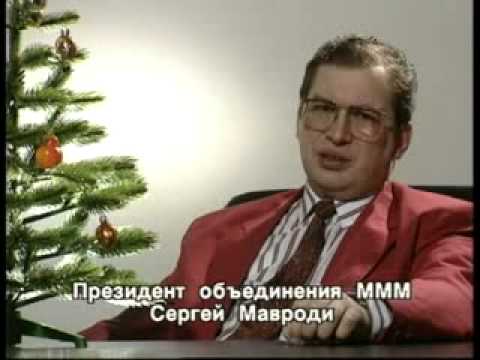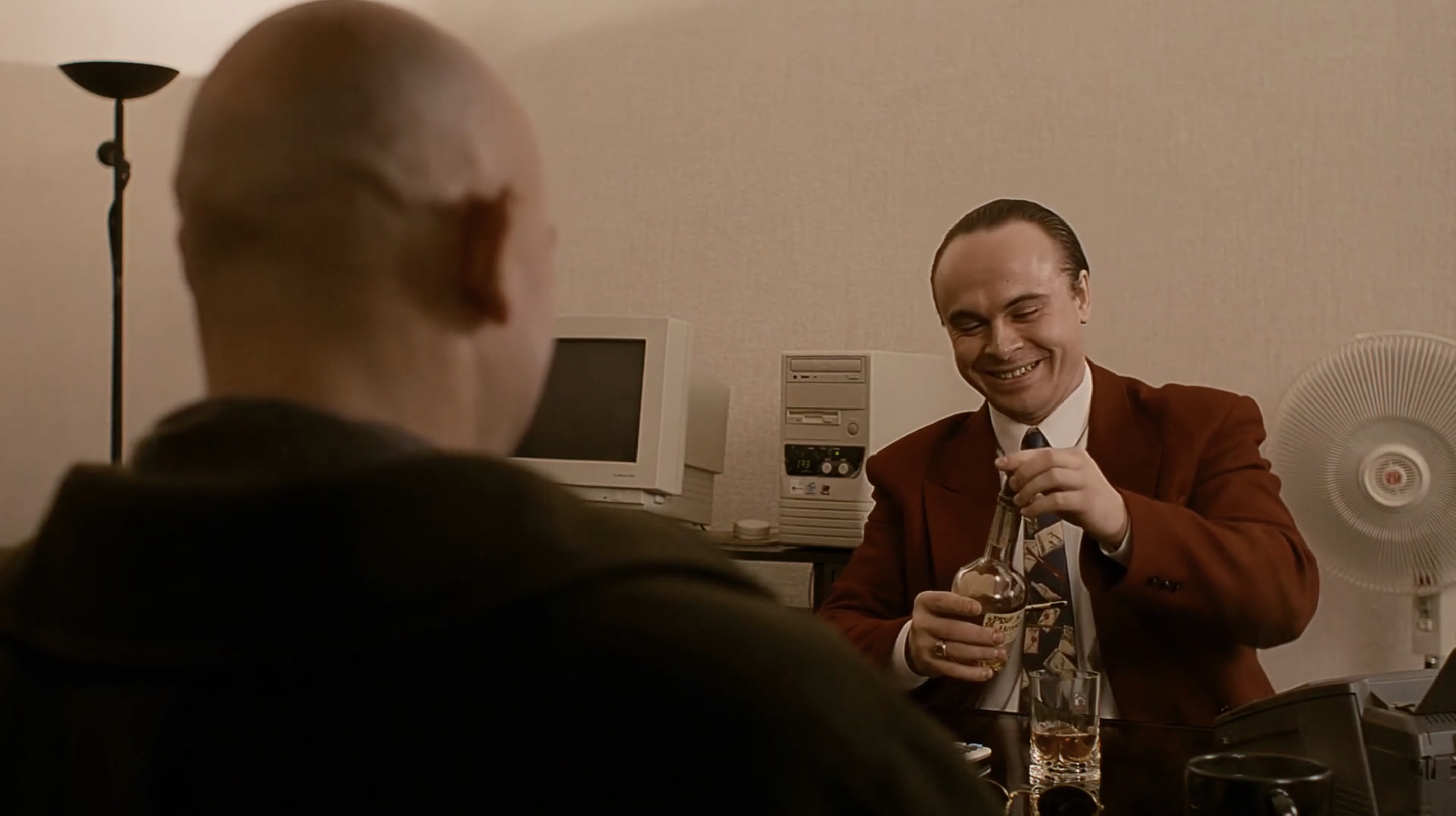Filed Under: Material culture > Arts or design > The Raspberry Blazer
The Raspberry Blazer
[4 items]
The origin of the “raspberry blazer” as the iconic formalwear of choice for “New Russians” is disputed. Some believe that the fashion began in 1991, on the set of the gameshow Chto? Gde? Kogda? (What? Where? When? or ChGK). That year, the show became an “intellectual casino” claiming to be “the only place in Russia where one could earn money through the power of the mind.” As a symbol of their success on the show, each season’s best player would be gifted a raspberry-colored blazer, along with the title of “immortal member” of the ChGK club. Within a few years, the blazers of Chto? Gde? Kogda? would be entirely replaced by tuxedos. This sartorial change signaled that the former Soviet engineers who populated the game show’s ranks were now transforming into wealthy post-Soviet aristocrats whose financial success was partly justified by their command of “culturedness,” taste, and erudition. At about the same time, the newspaper Kommersant, with its side-project Domovoi (House Elf), was doing similar work in its attempt to imagine and target “New Russians.”
The problem was that the term “New Russians” never stuck to the kind of people that were celebrated by either Chto? Gde? Kogda? or Kommersant. Rather, it described white-collar criminal businessmen (at best) or outright racketeers and gangsters (at worst). Both categories of men sported the “raspberry blazer,” its prominence rising in proportion with efforts by Italian designer Gianni Versace (1946-1997), who featured them in his Men’s collections of 1991 and 1992, and arch-grifter Sergei Mavrodi (1955-2018). Versace’s self-evident primacy among those interested in conspicuous consumption gave the designer a privileged place in the emerging Russian market for Western luxury goods.
The blazer’s popularity was further enhanced by Sergei Mavrodi (see third image above), founder оf the fraudulent shareholder company MMM, who wore it for his televised season’s greetings on New Year’s Eve 1994. Mavrodi epitomized a person who sought to present himself as a “New Russian” in Kommersant’s sense of the word, but who was actually a classic 1990s criminal. Starting in 1994, he flooded the airwaves with advertisements for shares in his MMM Ponzi scheme, always promising returns that seemed too good to be true—and proved to be so by mid-1994, when the firm collapsed and left millions of Russians in the lurch. The taste for raspberry blazers, meanwhile, survived unscathed, as evidenced by film director Aleksei Balabanov’s (1959-2013) decision to dress his villain in one in the cult 1997 hit Brother (see fourth image above), widely regarded as the most iconic Russian film of the 1990s.
The problem was that the term “New Russians” never stuck to the kind of people that were celebrated by either Chto? Gde? Kogda? or Kommersant. Rather, it described white-collar criminal businessmen (at best) or outright racketeers and gangsters (at worst). Both categories of men sported the “raspberry blazer,” its prominence rising in proportion with efforts by Italian designer Gianni Versace (1946-1997), who featured them in his Men’s collections of 1991 and 1992, and arch-grifter Sergei Mavrodi (1955-2018). Versace’s self-evident primacy among those interested in conspicuous consumption gave the designer a privileged place in the emerging Russian market for Western luxury goods.
The blazer’s popularity was further enhanced by Sergei Mavrodi (see third image above), founder оf the fraudulent shareholder company MMM, who wore it for his televised season’s greetings on New Year’s Eve 1994. Mavrodi epitomized a person who sought to present himself as a “New Russian” in Kommersant’s sense of the word, but who was actually a classic 1990s criminal. Starting in 1994, he flooded the airwaves with advertisements for shares in his MMM Ponzi scheme, always promising returns that seemed too good to be true—and proved to be so by mid-1994, when the firm collapsed and left millions of Russians in the lurch. The taste for raspberry blazers, meanwhile, survived unscathed, as evidenced by film director Aleksei Balabanov’s (1959-2013) decision to dress his villain in one in the cult 1997 hit Brother (see fourth image above), widely regarded as the most iconic Russian film of the 1990s.



